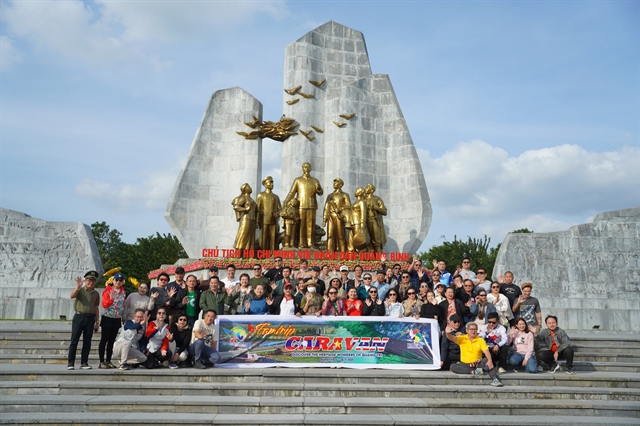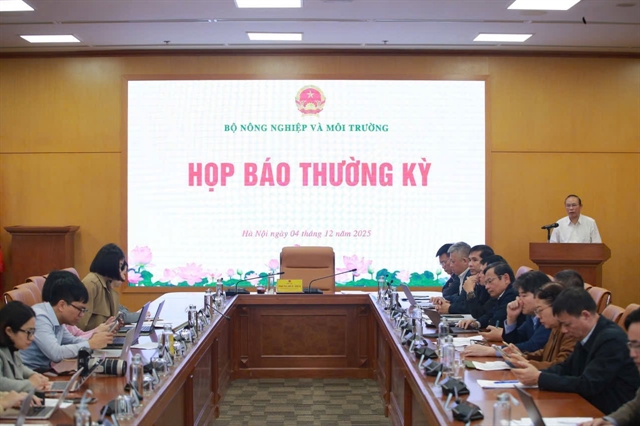 Opinion
Opinion

 |
| Head of the research division at the Việt Nam Industrial Park Finance Association (VIPFA) Dr Bùi Quý Thuấn. Photo courtesy of VIPFA |
Dr Bùi Quý Thuấn, Head of the research division at the Việt Nam Industrial Park Finance Association (VIPFA), discussed with Vietnam News Agency the root causes and systemic solutions to the country’s lingering problem of delayed and abandoned urban projects.
What are the consequences of unfinished construction projects and long-abandoned urban zones for the economy and the business environment? How do they affect investor confidence?
The proliferation of stalled construction projects and abandoned urban areas across many cities and provinces reflects not only a significant waste of investment resources, but also deep-rooted shortcomings in local governance, particularly in major cities such as Hà Nội, HCM City, Hải Phòng and Đà Nẵng. These issues span the entire process – from planning and investor selection to implementation and oversight.
A massive amount of land resources, capital and opportunities for sustainable urban development has been squandered. These deserted zones contribute nothing to the economy or State budget, yet they incur ongoing costs for maintenance, security and dispute resolution. This misallocation distorts the structure of socio-economic development, especially in large urban centres.
When housing and public infrastructure projects are left incomplete, they fail to meet the real needs of residents. This leads to housing shortages, surging property prices and increased inequality in access to land, housing and services.
From the perspective of the business environment, these failings erode the confidence of enterprises and investors, particularly long-term ones. In an environment where project approvals and land allocation are easy, but implementation is difficult and project revocation is inconsistent, high-quality private investment is unlikely to flourish. Investor and business trust is an intangible yet immensely valuable asset. Once lost, it is not easily regained.
In your view, what are the deeper, structural causes behind these delayed and abandoned projects?
The roots of this issue lie not just in execution and oversight failures, but in deeper systemic problems tied to our development institutions.
Urban planning in many localities lacks vision and coherence. It is often disconnected from other critical plans such as land use and infrastructure, and tends to be superficial, lacking grounding in scientific analysis, real-world needs or the actual capacity of administrative agencies to implement them.
There are still major flaws in planning methodologies, procedures and content. The underlying data systems remain inadequate, and the quality of development forecasting is low. Some planning decisions are driven by administrative pressure or the aspirations of a political term, resulting in impractical or suspended plans. Weak coordination among national, regional and local master plans has also led to projects being stalled due to incompatible approvals or a lack of supporting infrastructure.
The investor selection process is still too lax, with vague criteria regarding financial strength, technical capabilities and project experience. Many companies are primarily interested in securing land use rights, with little intention of developing products or services that match market demands. In reality, there are numerous cases where investors simply sit on land, waiting for prices to rise, or engage in speculative transfers.
Moreover, the regulatory and enforcement systems lack sufficient punitive measures. Such conditions breed inertia and a tendency to wait for policy. Local authorities also face obstacles in reclaiming land or dealing with violations due to fears of legal disputes, unclear procedures or personal liability.
From an institutional and policy standpoint, can you elaborate on the issues in urban planning, public investment management and land administration that have contributed to this wastefulness?
Urban and development planning in Việt Nam remains fragmented and poorly integrated. It often lacks alignment with land-use planning, infrastructure development and sectoral strategies. As a result, many projects cannot proceed due to the absence of essential infrastructure or conflicts with other existing plans.
In some localities, planning adjustments are made too easily, distorting the market and creating regulatory risks. This fosters unfair competition among investors in urban and real estate development.
Public investment allocation mechanisms also suffer from a lack of focus. Resources are spread thin rather than concentrated on projects critical to socio-economic development. In some cases, capital allocation still follows an equal share or 'asking and giving' logic, leading to the approval of numerous projects without sufficient funding or thorough independent assessments of their effectiveness.
Many infrastructure projects deteriorate before reaching full operational capacity, reflecting a mindset focused more on fulfilling bureaucratic targets than achieving real socio-economic impact. Oversight and evaluation mechanisms for public investment remain weak, and accountability among key stakeholders is limited.
Land management presents similar challenges. The process of allocating or leasing land is often disconnected from project timelines, while land valuation methods lack scientific rigor and transparency, facilitating speculation, land hoarding and opaque transfers.
Of particular concern is the land auction process, which in many rapidly urbanising areas lacks competitiveness and is vulnerable to manipulation or collusion. This prevents land resources from being distributed through a fair market mechanism.
Moreover, Việt Nam’s land database is neither fully digitised nor properly integrated across agencies, making land oversight and project monitoring opaque and delayed. As a result, many projects are granted land rights but remain dormant for years. On a positive note, the upcoming nationwide digital land database is a promising step toward resolving this issue.
Decentralised land governance without a corresponding central oversight mechanism also opens the door to interest groups and discretionary decisions in licensing, planning amendments and land allocation.
From your perspective as an expert, what solutions would you recommend to fundamentally resolve these issues?
First and foremost, a comprehensive review and stricter regulatory framework is needed. A mandatory biennial inspection mechanism should be introduced to monitor delayed projects. Projects behind schedule by over three years must face strict penalties, including land reclamation, progressive taxation or administrative fines on the unused land area.
For salvageable projects, there should be mechanisms to address funding, administrative or land clearance obstacles. Authorities should identify new qualified investors, revise project scopes, or adjust objectives to fit current realities.
For infeasible projects, the law must be enforced decisively: land should be reclaimed, public auctions held for both the land-use rights and any existing assets, and, where appropriate, the land should be repurposed in line with updated planning.
We also need to build a national database on planning and investment projects that publishes project timelines, investor commitments and progress updates, enabling public and enterprise oversight and deterring collusion.
Reform of the investor selection mechanism is also crucial, in line with the 2024 revisions to the Land Law and Bidding Law. Việt Nam must move from a 'land allocation—investment petition' model to open, competitive bidding with transparent criteria and binding performance obligations. Land should not be allocated to investors unable to meet implementation deadlines or standards.
Additionally, we must promote a transparent transfer mechanism that allows delayed projects to be reassigned to capable investors through public auctions with clear conditions. Independent audits, inspections and community monitoring must also be strengthened.
Audit and inspection bodies should be granted full access to project information and legal tools to address violations from the project planning phase onward. Above all, enhancing community and citizen participation throughout project execution is vital to ensure both effectiveness and genuine socio-economic contributions.
What are your expectations regarding the improvement of the legal framework and planning practices in addressing waste and delays in stalled projects?
I place strong hopes on the ongoing improvements to Việt Nam’s legal framework, especially following the passage of key laws such as the revised Land Law (2024), the Investment Law, the Law on Public Investment, the Construction Law and the Planning Law. If these new provisions are implemented seriously, including market-based land valuation to curb speculation; clearly defined land-use responsibilities tied to project timelines; and enhanced transparency in planning information with community oversight, we can begin to address the deep-seated inefficiencies.
A strengthened legal system will provide a clearer, more transparent and stable regulatory environment for investment and construction activities. It will also simplify procedures, reduce compliance costs and minimise risks for businesses. Most importantly, tighter enforcement of accountability, monitoring mechanisms and penalties for violations must become the norm.
Planning processes from formulation and appraisal to approval and implementation—must be substantially improved in quality. Plans should be grounded in long-term vision, scientific evidence, and realistic resource assessments, and closely aligned with actual development needs. Transparency and public participation must be built into both planning and oversight processes, with a firm stance against arbitrary or piecemeal adjustments to existing plans.
More fundamentally, I hope to see a shift in governance mindset from administrative management to data-driven and results-based development management. Planning should not be viewed merely as a technical drawing, but as a tool to allocate social resources efficiently and equitably. Combating waste is not the sole responsibility of the state. It requires coordinated mechanisms that engage citizens, businesses and civil society in oversight and enforcement. — VNS




